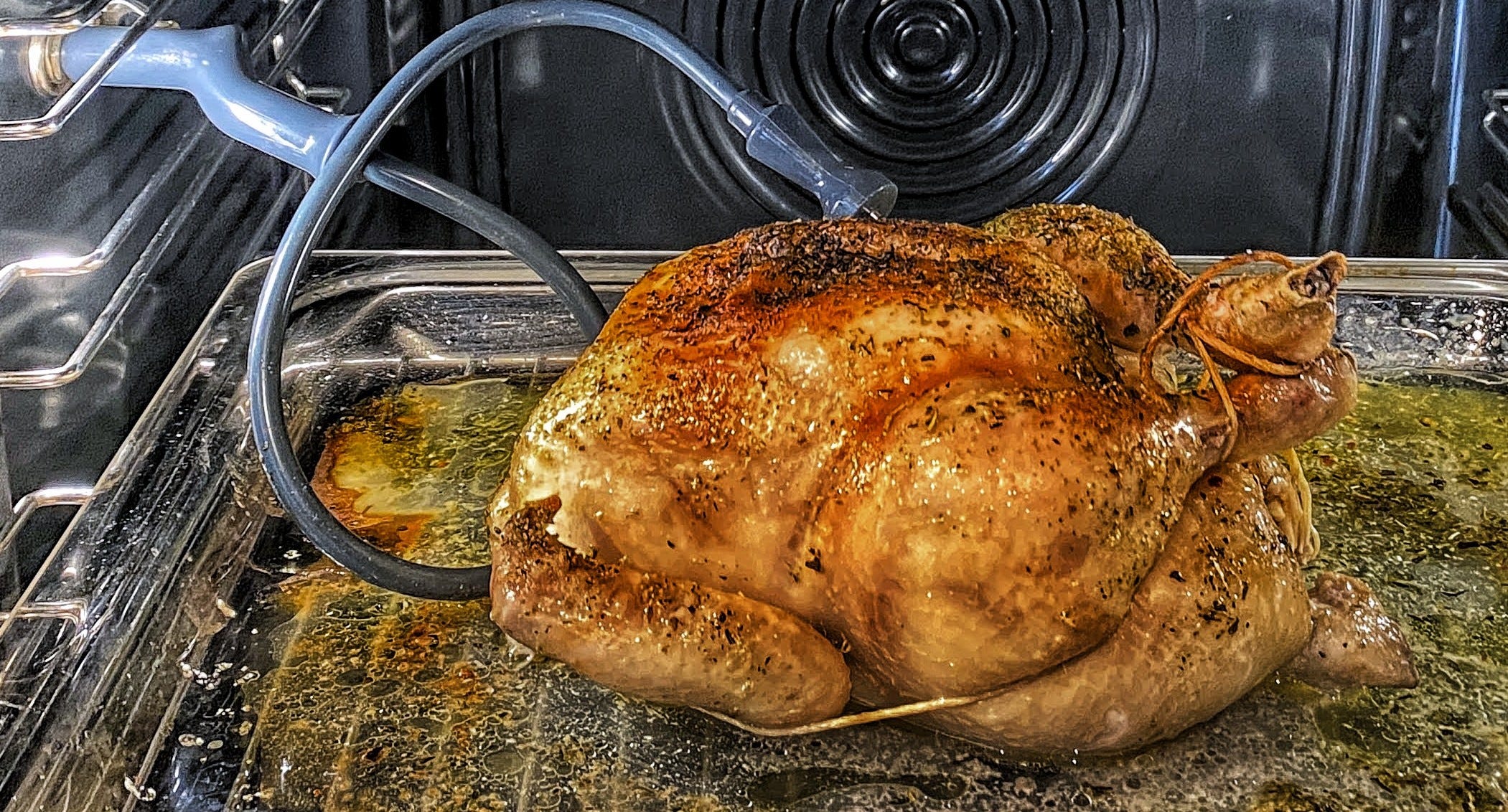
One of the innovations in Oven Technology is the introduction of the Core Temperature Probe. Today many ovens include this useful tool, but what is it for and when should you use it?
The integrated temperature probe is suitable for a variety of dishes. For many foods like poultry, beef, lamb, fish, pork and duck, measuring the internal temperature is the most precise way of determining if food is accurately cooked.
Sensors within the probe measure accurately the internal temperature of the food rather than the temperature of the ovens air, so instead of setting a cooking duration and then using the traditional methods, (or even guesswork!) to judge when your food is cooked, the temperature probe will tell you when your meat has reached the exact internal core temperature that you have chosen and will automatically turn off once that desired temperature has been reached, meaning no more undercooked or overcooked meat or poultry. Some probes will even show you the current temperature of the meat while it is cooking so you can judge when to add or start to cook your accompaniments.
Therefore using a temperature probe eliminates the need for guessing cooking times and manual checking is no longer required. This means less moisture and heat is lost from the oven with unnecessary opening of the oven door.
Oven temperature probes are either plugged into the oven wall or wireless, depending on the brand.
With a wireless probe, the core temperature is sent via a radio signal from the transmitter in the handle of the probe to the electronic module of the appliance as soon as the probe is inserted into the food and placed in the oven. A wired probe is inserted into the thickest part of the meat and the other end is plugged in on the side or roof of the oven, depending on brand.
If you are lucky enough to have an oven with this feature, it will become an essential tool when cooking proteins, but if your oven doesn't have this feature, many varieties of core temperature probes can be purchased, from very basic probes that are used just for checking at the end or during a cook, or probes that can be used inside the oven, some wired to a device outside the oven and some with Bluetooth connectivity that remain in the oven during the cooking process and that will connect to an app which will indicate when your meat is cooked.
Here are some tips to consider when using your core temperature Probe
- When using your probe make sure it is inserted into the thickest part of the meat/poultry/fish avoiding the bone
- Ensure the temperature probe doesn’t touch any gristle or bone or the roasting dish.
- Avoid inserting the probe into fat as the fat will heat and cook quicker than lean protein.
- For a whole chicken, insert the probe into the thickest part of inner thigh, parallel to the leg.
- For larger cuts of meat, insert the probe at an angle from above as far as the probe will go into the meat.
- For thinner cuts of meat like a thick individual sirloin, insert probe horizontally into the side of the meat at the thickest part
- When using a probe with red meats where you want a certain level of rareness keep in mind that the meat will continue to cook while resting so set your finished temperature several degrees below your preferred doneness.
- With poultry you will get perfect results. We frequently overcook our poultry because we are scared of undercooking. No more dry overcooked meat. Your dish will be juicy and perfectly cooked every time
- The probe can also be used to monitor reheating meals i.e. lasagna, casseroles, nestle probe into center of dish (away from base of dish) and set probe to desired temperature over 74C.
- Follow this guide, or search the internet for core temperature guidelines Adjust as you get the hang of using the probe to your desired cook especially for beef and lamb
- Temperatures below are NZ food safety standards
- Beef – Rare – 51.6, Medium rare 54.4 - 57.2c, well done 71c
- Lamb – Rare – 57.2c, Medium rare 60c to 65.5c, well done 73.9c
- Pork – 62.8c
- Poultry – turkey & chicken – 74c to 80c
- Fish – 54c to 62c
- Casseroles – 71.1c
- Reheating - 74c




